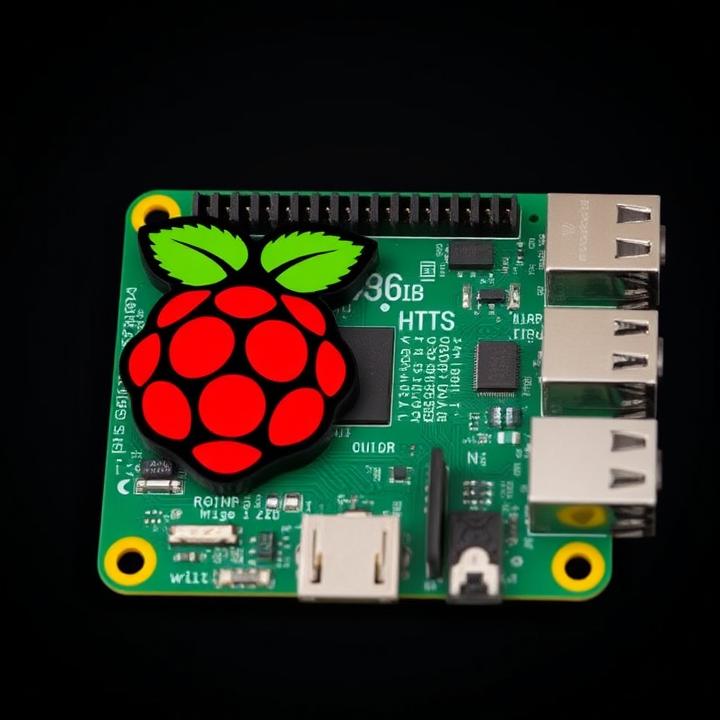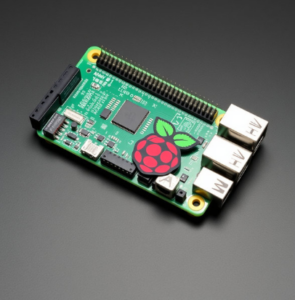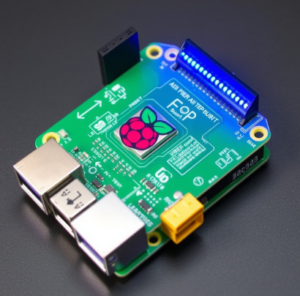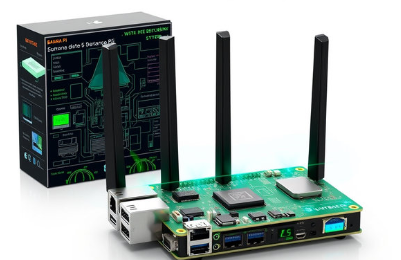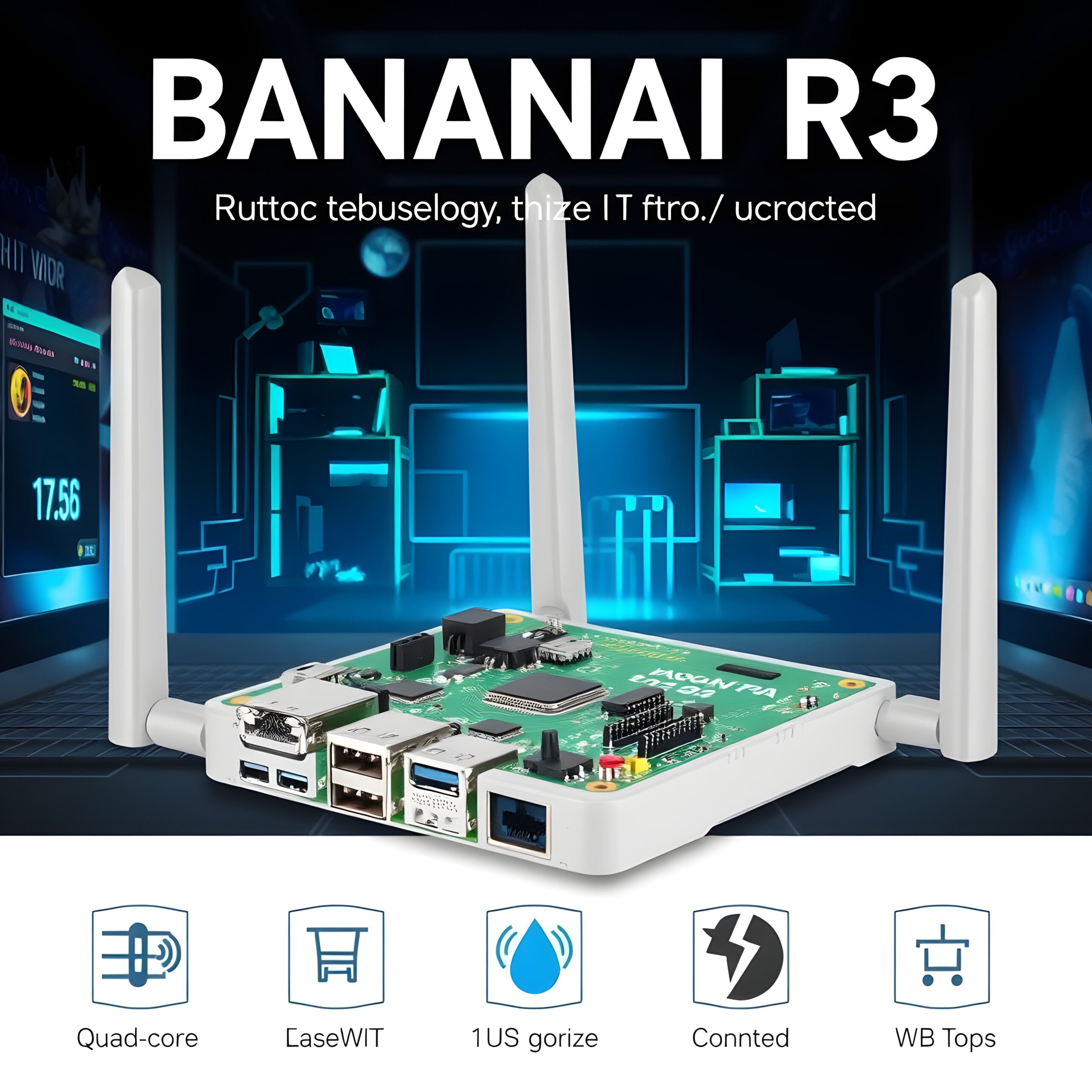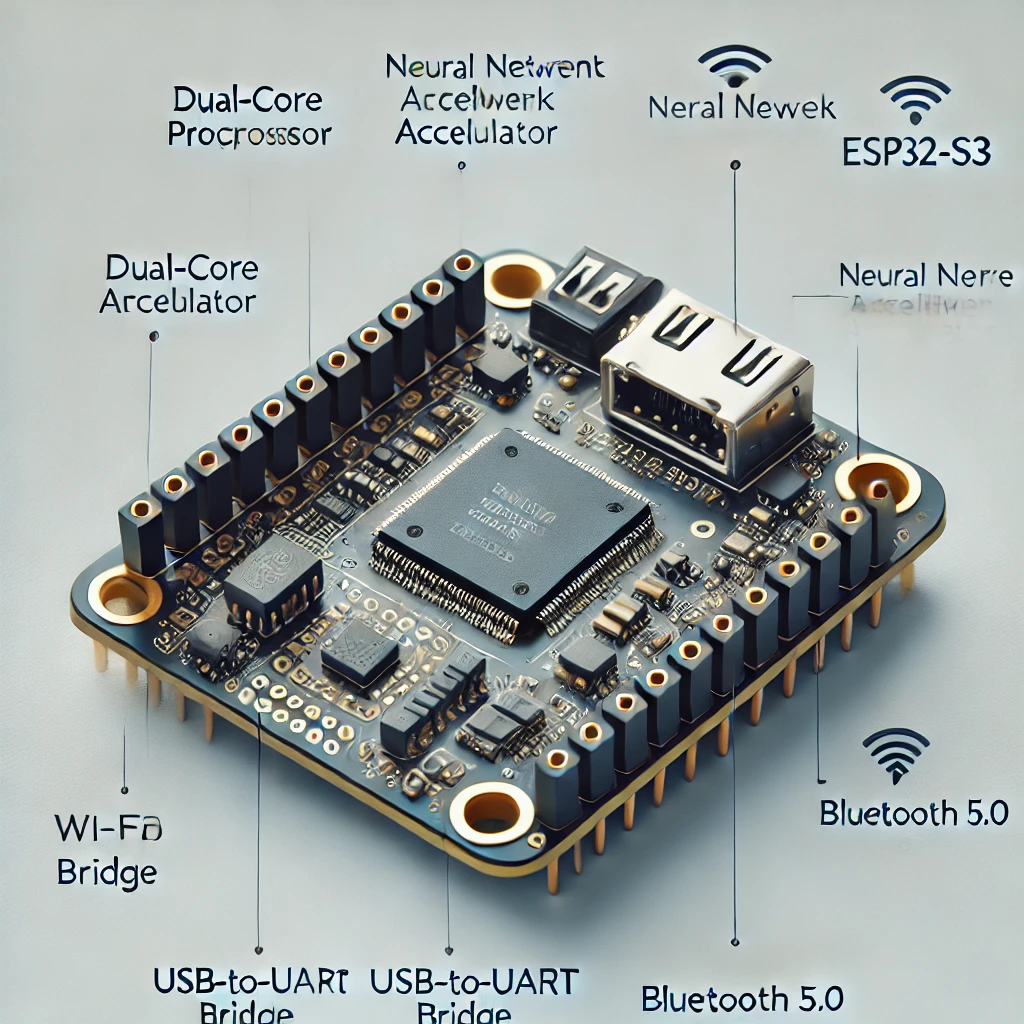The Raspberry Pi AI HAT+ is set to revolutionize DIY AI projects. With 26 TOPS processing power, it offers seamless integration with Raspberry Pi 5 for advanced machine learning capabilities.
Raspberry Pi’s New AI HAT+
Raspberry Pi continues to shape the world of accessible technology by making powerful computing resources available to makers, educators, and developers at an affordable price. The release of the AI HAT+ is another significant milestone in this journey, expanding the possibilities of machine learning and AI on the Raspberry Pi platform. This new expansion board, designed for use with the Raspberry Pi 5, promises to bring high-performance AI processing to projects ranging from smart homes to autonomous robots, without breaking the bank.
Unlike previous accessories that provided general functionality, the AI HAT+ is built specifically for AI-powered applications. Whether you’re running a deep learning model or implementing computer vision, this hardware allows you to achieve high-performance results with minimal setup. The AI HAT+ is powered by the Hailo 8 processor, a highly specialized AI accelerator capable of processing 26 TOPS (Tera Operations Per Second). This ensures that users can perform complex machine learning tasks locally, drastically reducing latency compared to traditional cloud-based solutions.
The inclusion of the Hailo 8 processor is a game-changer, as it enables real-time AI inference, which is especially critical in applications like object detection, facial recognition, and robotic automation. With 26 TOPS of performance, this new hardware has enough processing power to run large models at an incredible speed, all while maintaining energy efficiency—a key consideration for projects that require continuous operation, such as drones or self-driving cars.
This new board unlocks a wide variety of possibilities for DIY makers, educators, and developers who want to experiment with AI without needing to purchase expensive hardware. By adding this expansion board to their existing Raspberry Pi setup, users can now easily harness the power of AI at the edge, making this technology both more powerful and accessible.
In a world where AI is increasingly shaping industries from healthcare to manufacturing, this AI HAT+ serves as a vital tool for building localized, intelligent systems. It empowers users to bring AI-powered applications to life more cost-effectively and efficiently than ever before, with the added benefit of a thriving community of Raspberry Pi enthusiasts to support and inspire creative projects.
What Is the AI HAT+?
The AI HAT+ is an expansion board designed specifically for Raspberry Pi 5, which allows the single-board computer to leverage 26 TOPS of processing power dedicated to machine learning and AI inference tasks. This makes the AI HAT+ an ideal addition for anyone interested in adding sophisticated AI capabilities to their Raspberry Pi-powered projects, whether for personal experimentation or professional applications.
Powered by the Hailo 8 processor, the AI HAT+ offers a significant upgrade over the general-purpose computing that traditional Raspberry Pi boards are typically used for. The Hailo 8 chip is a dedicated AI accelerator, designed to maximize the throughput of deep learning models while minimizing the latency traditionally associated with AI processing. This means that users can run machine learning models such as convolutional neural networks (CNNs) or recurrent neural networks (RNNs) on the Raspberry Pi at high speeds, without the need for cloud-based resources.
The AI HAT+ directly connects to the Raspberry Pi 5 via the GPIO pins, ensuring that it integrates seamlessly into the overall ecosystem. The HAT is designed to be plug-and-play, meaning that once it’s attached, users can begin programming AI models without extensive hardware configuration. While the AI HAT+ is a powerful tool, it is also easy to use for newcomers to AI and machine learning, thanks to the vast resources and tutorials available within the Raspberry Pi community.
In terms of hardware, the 26 TOPS refers to the number of operations that the chip can perform per second. This allows for incredibly fast data processing, which is critical for real-time applications such as robotics or video analytics. For reference, many consumer-grade edge AI devices available today operate at far lower performance levels, making the Raspberry Pi AI HAT+ a competitive offering in the world of DIY AI applications.
By using this AI HAT+, Raspberry Pi enthusiasts can now train, test, and deploy complex AI models entirely on the Raspberry Pi hardware, all while keeping energy consumption low. This makes it a valuable tool for projects that need to operate continuously or in environments where traditional power sources are unavailable.
The capabilities of the AI HAT+ aren’t limited to just theoretical AI applications; the board can run practical models for face recognition, object tracking, and even speech-to-text processing. For example, you could use the HAT to run a facial recognition system for home security, or you could integrate it into a robotic vehicle to help it navigate its surroundings. These tasks would traditionally require expensive hardware or cloud-based solutions, but with the AI HAT+, they can now be achieved using an affordable Raspberry Pi setup.
Key Features of the Raspberry Pi AI HAT+
The Raspberry Pi AI HAT+ is packed with features designed to enhance its AI capabilities while maintaining the affordability and accessibility that the Raspberry Pi community is known for. Here are the key features of the AI HAT+ that make it stand out:
- AI Powerhouse: The AI HAT+ is powered by the Hailo 8 processor, capable of delivering 26 TOPS of processing power. This is a significant leap from previous Raspberry Pi boards, which were not optimized for AI tasks. With this added processing power, users can run machine learning models for real-time inference tasks, such as object recognition, speech processing, and natural language understanding.
- Seamless Integration with Raspberry Pi 5: The AI HAT+ is designed to work exclusively with the Raspberry Pi 5, ensuring that users can take full advantage of the enhanced processing power of the Pi 5’s ARM Cortex-A76 CPU. The Pi 5 also boasts improved memory capacity and faster USB 3.0 and Ethernet connectivity, making it the perfect host for the AI HAT+.
- Local AI Processing: One of the biggest benefits of the AI HAT+ is the ability to run AI models locally, which is essential for applications that require low latency and real-time responses. Traditional cloud-based AI solutions often suffer from significant lag due to the time it takes for data to travel to and from the cloud server. With the AI HAT+, all processing is done on the Raspberry Pi, eliminating the need for cloud computing and ensuring faster performance in edge AI applications.
- Energy Efficiency: Despite its powerful performance, the AI HAT+ is designed to be energy-efficient. The Hailo 8 processor uses low-power computing techniques to ensure that AI models can run on Raspberry Pi devices for extended periods without draining battery life. This is a crucial feature for edge AI devices that operate continuously or in remote locations where power sources are limited.
- Ease of Use: As with all Raspberry Pi products, the AI HAT+ is designed to be accessible to both beginners and experts. The setup process is straightforward, and extensive documentation, tutorials, and community support are available to help users get started with AI programming. Additionally, the AI HAT+ is compatible with many popular machine learning frameworks such as TensorFlow, PyTorch, and OpenCV, making it easy for developers to integrate it into existing projects.
- Expandable Capabilities: In addition to its AI-specific applications, the AI HAT+ also opens up new possibilities for embedded systems. Whether you’re building smart devices, robots, or drones, the AI HAT+ provides the performance needed to create intelligent systems that can process and act on information in real-time. Its compact design ensures that it can be integrated into a wide range of projects without taking up too much space.
By combining these features, the AI HAT+ provides a versatile, high-performance solution for anyone looking to incorporate AI into their Raspberry Pi-powered projects.
Applications of the AI HAT+
The release of the Raspberry Pi AI HAT+ has opened the door for a range of exciting new applications in the world of edge AI. Here are some of the most notable ways that users can leverage the power of this hardware in practical projects:
- Object and Image Recognition: One of the primary use cases for the AI HAT+ is in the field of object detection and image classification. The 26 TOPS of processing power allow the Raspberry Pi to run complex computer vision models, making it perfect for applications such as surveillance cameras, inventory tracking, and even autonomous vehicles. Using popular AI frameworks like TensorFlow or PyTorch, developers can easily train models to recognize specific objects or people in images or video streams.
- Facial Recognition: The AI HAT+ is ideal for building facial recognition systems. With its high processing power, the Raspberry Pi can run models capable of identifying faces in real-time. This has many practical applications, such as access control systems for secure buildings or personalized AI assistants that recognize users and respond accordingly. As with object recognition, this functionality can be achieved locally, without relying on cloud services.
- Autonomous Robotics: The AI HAT+ is a powerful addition to the toolset .
1. What is the Raspberry Pi AI HAT+ used for?
The AI HAT+ is an expansion board for the Raspberry Pi 5 designed to enhance its machine learning and artificial intelligence capabilities. It integrates a Hailo 8 processor, enabling high-performance AI processing, including real-time inference tasks such as object recognition, face detection, and robotic automation. The HAT+ can be used for applications ranging from smart home automation to self-driving robots, making it ideal for edge AI development.
2. How does the AI HAT+ improve performance compared to other AI hardware?
The AI HAT+ provides 26 TOPS of processing power, which allows it to handle complex AI models more efficiently than many traditional AI processors, especially those commonly used in DIY projects. This performance is ideal for applications that require real-time responses and local AI processing, reducing the need for cloud-based resources and latency issues.
3. Can beginners use the Raspberry Pi AI HAT+?
Yes, the AI HAT+ is designed to be accessible to users of all skill levels, including beginners. It integrates easily with the Raspberry Pi 5 and is compatible with popular machine learning frameworks like TensorFlow and PyTorch. Additionally, there are numerous tutorials and community resources available to help users get started with AI on the Raspberry Pi platform.
4. What types of projects can I build with the AI HAT+?
The AI HAT+ can be used in a variety of AI-driven projects, such as:
- Object recognition systems for surveillance or inventory management.
- Facial recognition applications for secure access or personalized systems.
- Autonomous robots that need real-time object detection and decision-making capabilities.
- Smart home devices that can recognize patterns or automate actions based on environmental changes.
5. How energy-efficient is the AI HAT+?
The Hailo 8 processor used in the AI HAT+ is designed to provide high performance while maintaining energy efficiency. This is especially important for edge AI applications that need to run continuously or in environments where power sources are limited, such as in drones or remote sensors.
6. Is the AI HAT+ compatible with other Raspberry Pi models?
Currently, the AI HAT+ is designed exclusively for the Raspberry Pi 5. However, it integrates seamlessly with the GPIO pins of the Pi 5, ensuring that users can easily attach the HAT to their existing setup. While other Raspberry Pi models may offer AI capabilities, the AI HAT+ is optimized to work best with the Raspberry Pi 5 due to its enhanced processing power and connectivity.
7. How easy is it to set up the AI HAT+?
The AI HAT+ is designed to be easy to use. Once connected to the Raspberry Pi 5, users can begin working with it right away. There’s no need for complex hardware configuration, and the board supports popular machine learning frameworks, which makes it a great tool for beginners and experts alike. Additionally, the Raspberry Pi community offers tutorials, example projects, and forums for troubleshooting.
8. What programming languages can I use with the AI HAT+?
You can use several programming languages to interface with the AI HAT+, including Python, which is widely used for machine learning applications. The TensorFlow and PyTorch libraries, both of which have Python support, are popular choices for running AI models. Additionally, the Raspberry Pi environment supports other languages such as C++ and Java, making it adaptable to a wide range of projects.
9. What kind of AI models can I run with the AI HAT+?
The AI HAT+ is capable of running a variety of machine learning models, including:
- Convolutional Neural Networks (CNNs) for image and video analysis.
- Recurrent Neural Networks (RNNs) for tasks like time series forecasting or speech recognition.
- Natural Language Processing (NLP) models for tasks like sentiment analysis or text classification. The AI HAT+ is suitable for running models locally, enabling real-time AI inference without needing to offload tasks to the cloud.
10. What makes the Raspberry Pi AI HAT+ different from other AI accelerators?
What sets the AI HAT+ apart is its 26 TOPS processing power, which is substantial for edge AI devices at an affordable price. Most other AI accelerators on the market are either more expensive or offer less processing power. Furthermore, the AI HAT+ is optimized for low latency and energy efficiency, making it ideal for applications where performance and battery life are critical.

